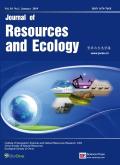Change and Driving Mechanism of the Daily Living Space of Residents in Rural Tourist Destinations—An Exploratory Analysis Based on a Cognitive Map
Q3 Environmental Science
引用次数: 1
Abstract
Abstract: The research on the daily living space of residents in rural tourist destinations focuses on the spatial change and functional transformation at the regional level; however, it dedicates insufficient attention to the daily behavior and emotional changes of “individuals” in the human-land relationship. This study proposes the analysis framework of residents' daily living space constructed by a material-behavioral-emotional ternary space, and expands the application of the cognitive map from the large scale urban-structure spatial image to the small-scale daily living space of rural residents; thus, it aims to enhance the visualization and effectiveness of the research. The study observed the following: (1) In the cognitive map, for the residents' of Naobao Village, the cognition pertaining to the material space changes of their daily life has shifted from road-oriented to area-oriented; In the behavioral space, the residential space has shifted from scattered to focused, the employment space has shifted from the “circular focus + extended sector” structure to the “circular focus” structure, the consumption space has shifted from explicit space to implicit space, and the leisure space has shifted from the “point set” mode to “circle layer” mode. In the emotional space, the pattern of “one ring, one network and four centers” has shifted to the “single ring type” pattern. (2) Based on the findings of the interviews, natural conditions, policies, and institutions, self-organizations and other organizations jointly form the “driving system-pattern evolution-spatial representation” driving mechanism, which promotes the evolution of the daily living space of Naobao Village. This research provides relevant reference for the construction and development of residents' living space in the development of rural tourism; meanwhile, it also attempts to analyze the change pertaining to residents' living space form and spatial cognition using a new method.乡村旅游目的地居民日常生活空间的变化及驱动机制--基于认知地图的探索性分析
摘 要:乡村旅游目的地居民日常生活空间研究关注区域层面的空间变迁和功能转换,但对人地关系中 "个体 "的日常行为和情感变化关注不足。本研究提出了由物质-行为-情感三元空间构建的居民日常生活空间分析框架,将认知地图的应用从大尺度的城市-结构空间图像拓展到小尺度的乡村居民日常生活空间,旨在增强研究的可视性和实效性。研究观察到以下几点:(1)在认知图谱中,直堡村居民对日常生活物质空间变化的认知由 "道路导向 "转向 "区域导向";在行为空间中,居住空间由 "分散 "转向 "集中",就业空间由 "环状聚焦+扩展扇形 "结构转向 "环状聚焦 "结构,消费空间由 "显性空间 "转向 "隐性空间",休闲空间由 "点集 "模式转向 "圈层 "模式。情感空间由 "一环一网四中心 "模式转向 "单环型 "模式。(2)基于访谈结果,自然条件、政策制度、自组织和他组织共同形成了 "驱动系统-格局演化-空间表征 "的驱动机制,推动了直堡村日常生活空间的演化。本研究为乡村旅游发展中居民生活空间的建设与发展提供了相关参考,同时也尝试用一种新的方法分析居民生活空间形态与空间认知的变化。
本文章由计算机程序翻译,如有差异,请以英文原文为准。
求助全文
约1分钟内获得全文
求助全文
来源期刊

Journal of Resources and Ecology
Environmental Science-Ecology
CiteScore
2.40
自引率
0.00%
发文量
107
 求助内容:
求助内容: 应助结果提醒方式:
应助结果提醒方式:


